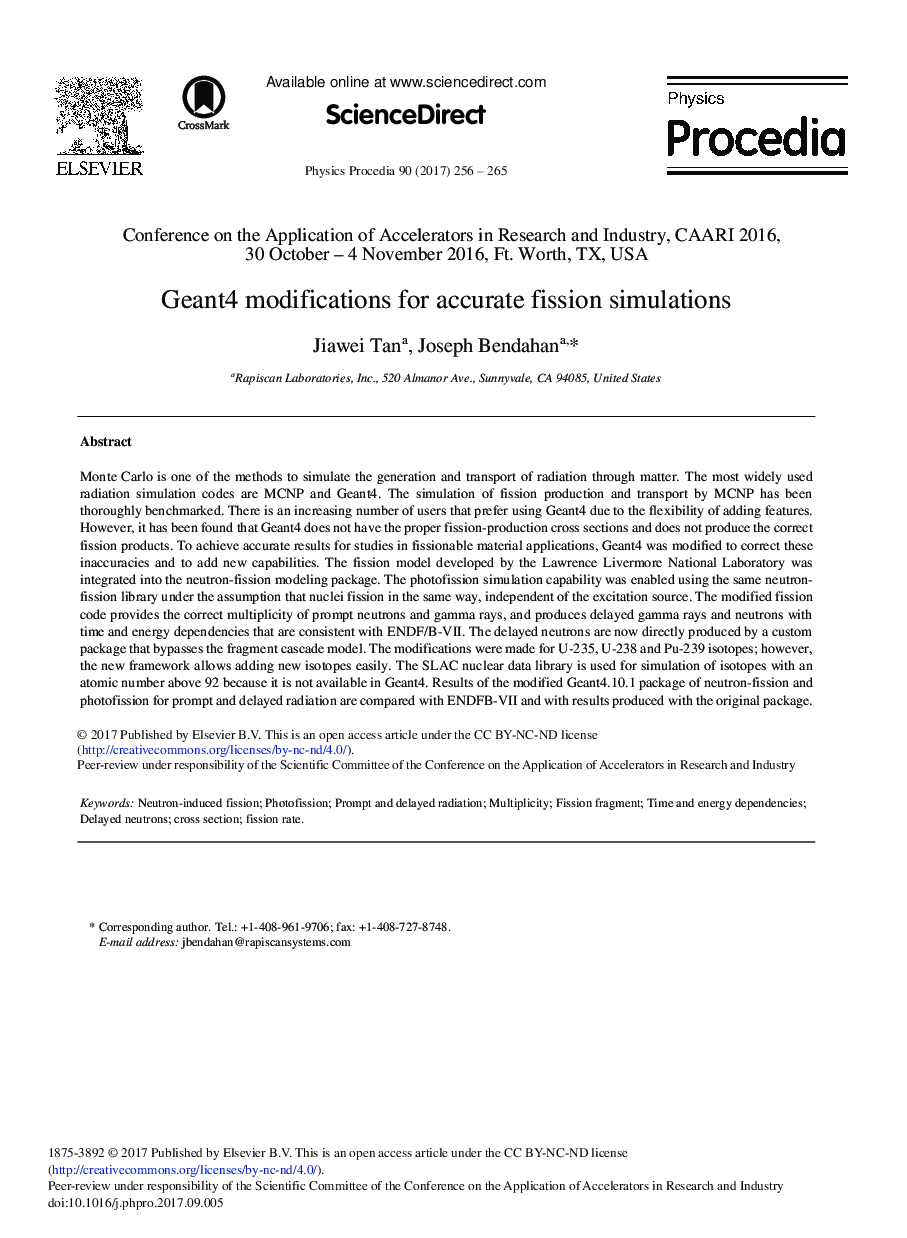| Article ID | Journal | Published Year | Pages | File Type |
|---|---|---|---|---|
| 8207626 | Physics Procedia | 2017 | 10 Pages |
Abstract
Monte Carlo is one of the methods to simulate the generation and transport of radiation through matter. The most widely used radiation simulation codes are MCNP and Geant4. The simulation of fission production and transport by MCNP has been thoroughly benchmarked. There is an increasing number of users that prefer using Geant4 due to the flexibility of adding features. However, it has been found that Geant4 does not have the proper fission-production cross sections and does not produce the correct fission products. To achieve accurate results for studies in fissionable material applications, Geant4 was modified to correct these inaccuracies and to add new capabilities. The fission model developed by the Lawrence Livermore National Laboratory was integrated into the neutron-fission modeling package. The photofission simulation capability was enabled using the same neutron-fission library under the assumption that nuclei fission in the same way, independent of the excitation source. The modified fission code provides the correct multiplicity of prompt neutrons and gamma rays, and produces delayed gamma rays and neutrons with time and energy dependencies that are consistent with ENDF/B-VII. The delayed neutrons are now directly produced by a custom package that bypasses the fragment cascade model. The modifications were made for U-235, U-238 and Pu-239 isotopes; however, the new framework allows adding new isotopes easily. The SLAC nuclear data library is used for simulation of isotopes with an atomic number above 92 because it is not available in Geant4. Results of the modified Geant4.10.1 package of neutron-fission and photofission for prompt and delayed radiation are compared with ENDFB-VII and with results produced with the original package.
Keywords
Related Topics
Physical Sciences and Engineering
Physics and Astronomy
Physics and Astronomy (General)
Authors
Jiawei Tan, Joseph Bendahan,
